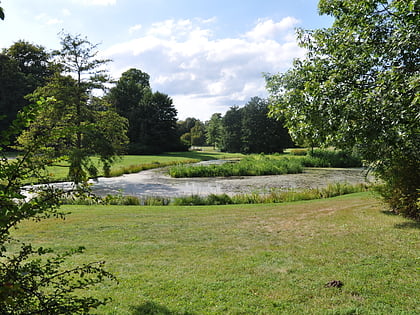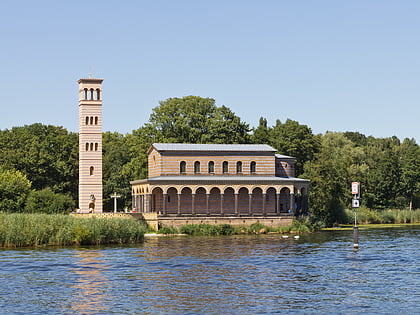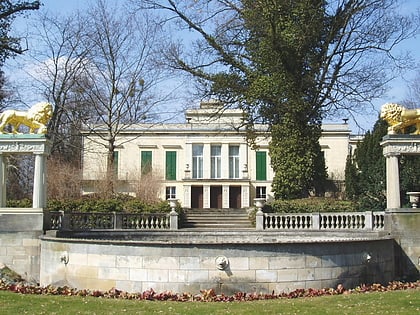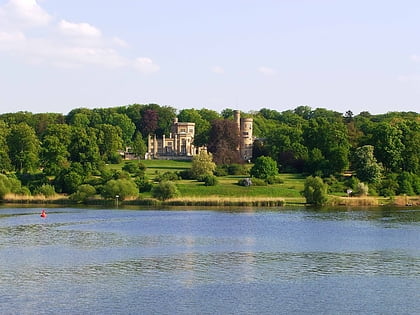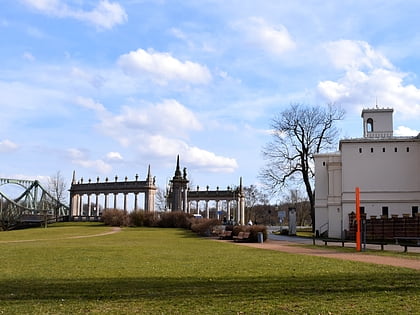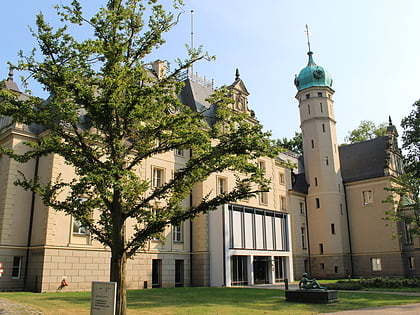Böttcherberg, Berlin
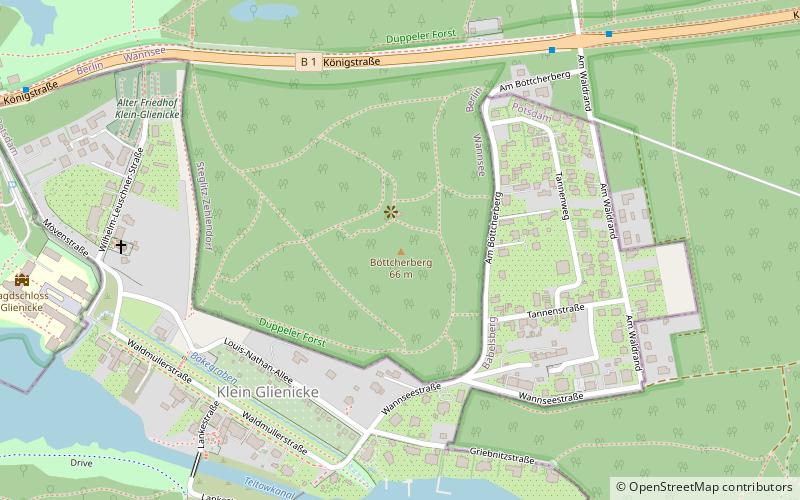
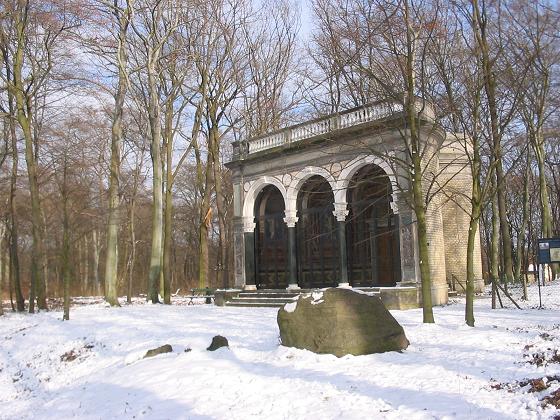
Facts and practical information
The Böttcherberg in the Klein Glienicke Landscape Park is part of the World Heritage Site of the Berlin-Potsdam Cultural Landscape, which stretches from Pfaueninsel to Werder and, together with its palaces and gardens, has been protected by UNESCO as a complete ensemble since 1990.
The 67-meter-high elevation is located in the Wannsee district of Berlin's Steglitz-Zehlendorf borough, immediately adjacent to Königstrasse between Klein Glienicke Park and Potsdam's Babelsberg Park. The former village and today's villa district Klein Glienicke at the foot of the mountain belongs to Potsdam, in contrast to the people's park of the same name, which here extends like an enclave to the area of Berlin's Wannseeplatte. The Berg and the villa district are separated from the Babelsberg park by the Griebnitzsee, the Glienicker Lake and the connecting section between the two lakes, the continuation of the Teltow Canal. The small "Park Bridge", which can only be used alternately in one lane, connects both parts of the landscape.
Prince Carl of Prussia commissioned Peter Joseph Lenné to design Glienicke Park. Lenné, who wanted to transform Potsdam's surroundings into a total work of art, included the Böttcherberg in the horticultural plans. According to a design from 1832, Lenné first planned the construction of a cottage - what was realized was a viewing area with the view axes typical of Lenné's works, which were directed towards the Jungfernsee, Weißer See, Krampnitzsee and Griebnitzsee. In the 1860s, the viewpoint came to be known as Rondell or Fächeraussicht.
Near the highest elevation is the Loggia Alexandra, which opens semicircularly to the park and was built by Prince Karl in 1869 in memory of a deceased sister. The Loggia, the jewel of the Böttcherberg, was restored after the political change. It was also possible to largely restore the original Lennéian design of the hillside from the point of view of garden monument preservation at the end of the 20th century.
From 1791 to 1804, the Böttcherberg was owned by Christian Böttcher, its current namesake. Until 1791 it was called Alter Weinberg because of the vineyards on its slopes and before that, when it was still used for agriculture, it was called Ackerberg. Since 1928, the hill has belonged to Berlin.
Geologically, the Böttcherberg is part of the Berlin-Brandenburg Teltow, a flat undulating plateau with a layer of boulders, marl and sand up to 15 meters thick, which was left behind by the water masses of the melting glaciers between the terminal moraine Fläming or the upstream Baruther Urstromtal and the Berlin Urstromtal about 15,000 years ago in the Brandenburg stage of the Weichselian Ice Age.
Steglitz-Zehlendorf (Wannsee)Berlin
Böttcherberg – popular in the area (distance from the attraction)
Nearby attractions include: Schloss Babelsberg, Glienicke Bridge, Park Glienicke, Heilandskirche am Port von Sacrow.
Frequently Asked Questions (FAQ)
Which popular attractions are close to Böttcherberg?
How to get to Böttcherberg by public transport?
Bus
- Sternwarte • Lines: 616 (14 min walk)
- Hermann-Maaß-Straße • Lines: 616 (19 min walk)
Ferry
- Glienicker Brücke - Potsdam • Lines: Potsdamer Wassertaxi (18 min walk)
- Park Glienicke - Krughorn • Lines: Potsdamer Wassertaxi (23 min walk)
Tram
- Glienicker Brücke • Lines: 93 (23 min walk)
- Ludwig-Richter-Straße • Lines: 93 (28 min walk)
Train
- Griebnitzsee (39 min walk)

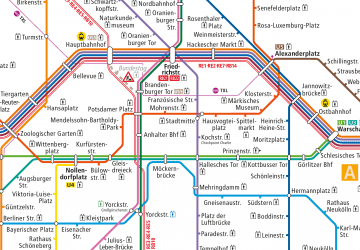 Metro
Metro

